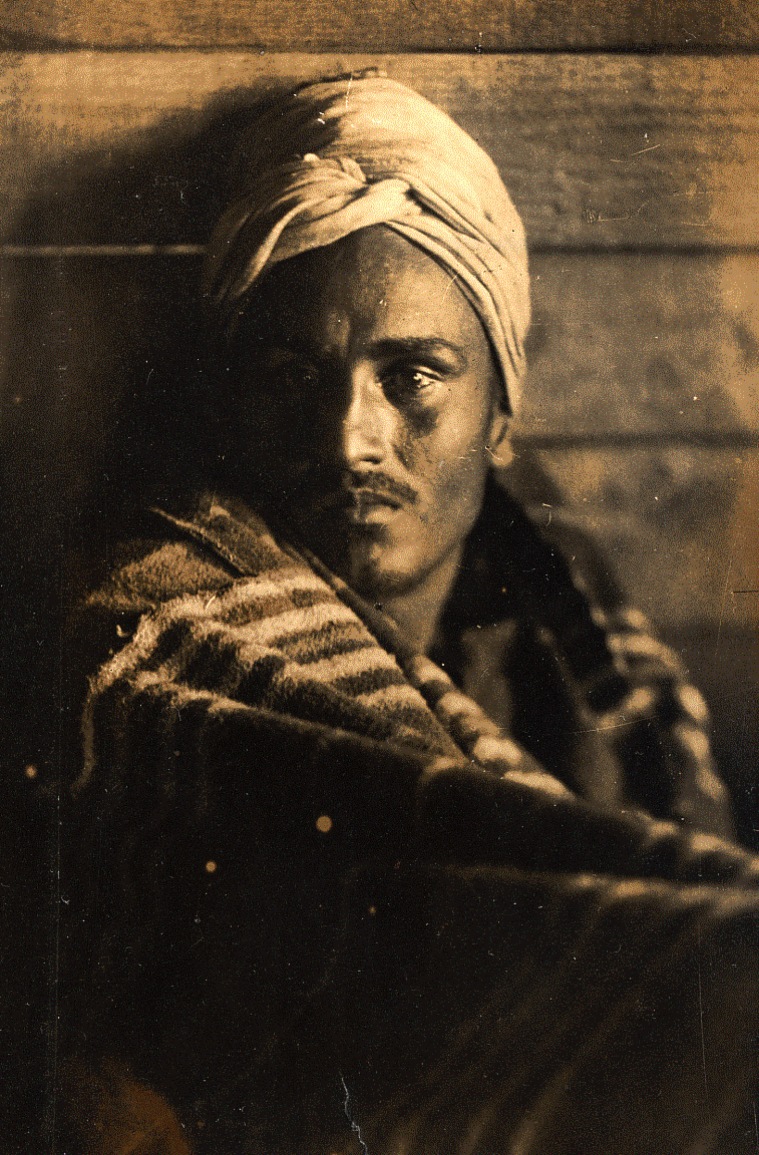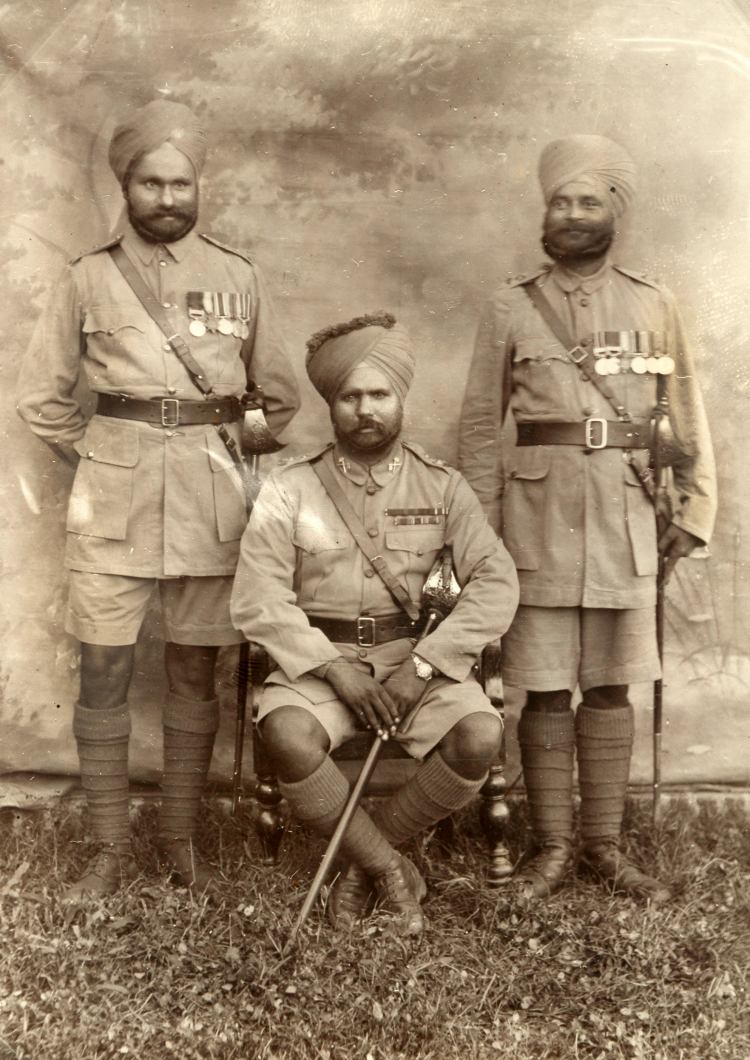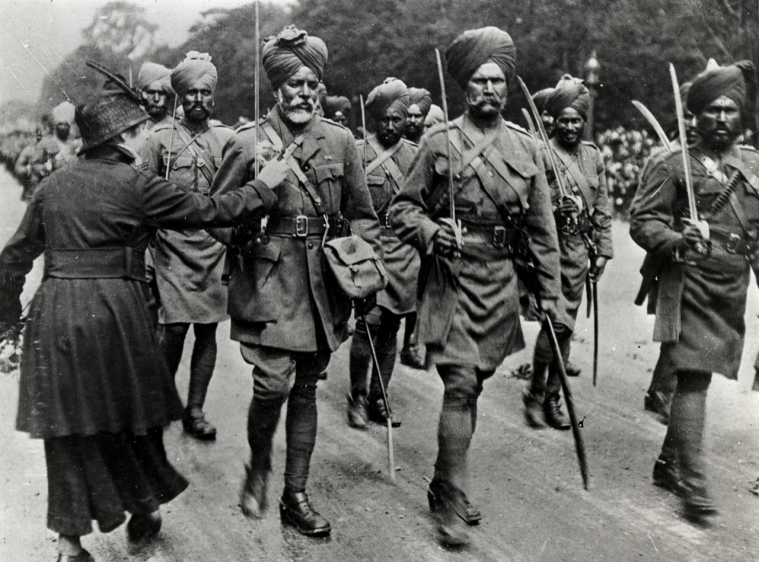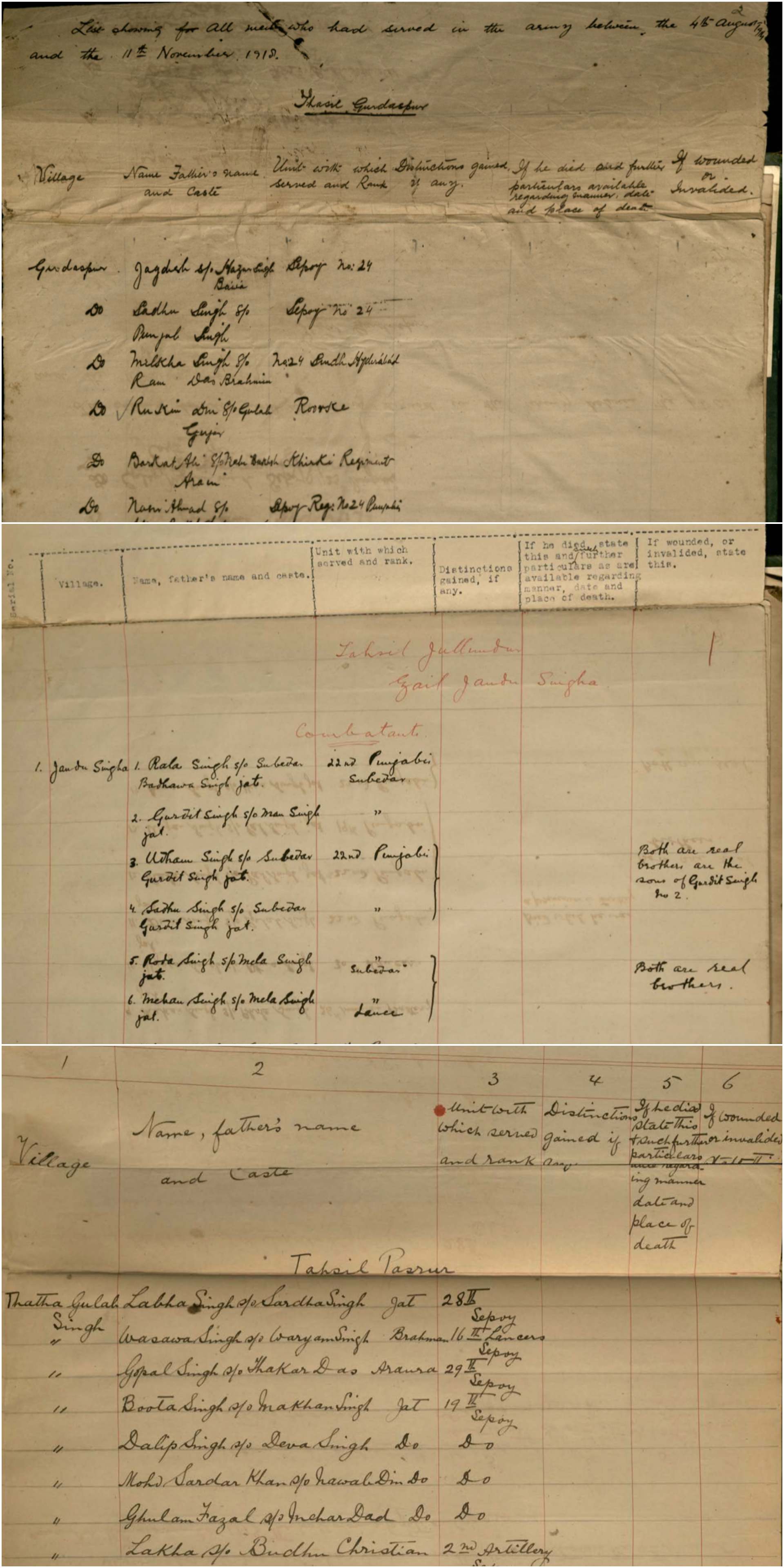On the 103rd anniversary of the culmination of World War I descendants of the British Indian Army soldiers from undivided Punjab can finally hope to have some of their questions answered.
On the 103rd anniversary of the culmination of World War I (July 28, 1914 -November 11, 1918), to be observed as Remembrance Day on Thursday across the globe, descendants of the British Indian Army soldiers from undivided Punjab can finally hope to have some of their questions answered – after a wait of over a century.
Seven years after London-based UK Punjab Heritage Association (UKPHA) began accessing and digitising the ‘Punjab Registers’ – documents detailing the account of each soldier who participated in WW-I from undivided Punjab – from the Lahore Museum in Pakistan, the organisation, in association with the University of Greenwich, will launch the digital platform http://www.punjabww1.com, where one can find and track each detail of the soldier by entering the name of the village or district on the map of undivided Punjab.
The first ever such digitization project, with information sourced from ‘Punjab Registers’ and then transcribed, digitized and mapped can help families, relatives and extended contacts of the soldiers finally get a closure as till now most of them were living with just bits and pieces such as a medal, a document, a sword or other war memorabilia — knowing that their ancestor was in WW-I but unaware of how they died, if they were missing, or died after the war.
Phase-1 of the platform will be launched with details of three districts – Ludhiana, Jalandhar (then Jullundur) and Sialkot (now in Pakistan) – on Thursday, where users can find details of 44,000 WWI soldiers.
For instance, if one enters ‘Ghalib Kalan, Ludhiana’ as the village name, it shows details of 173 soldiers, including the ‘original Register Page’ where that names are mentioned in records.
UKPHA founder Amandeep Singh Madra told The Indian Express that this begins to tell the story of 5 lakh men from Punjab who went to war – 5 per cent of the total British force. “It is a never before seen archive that shows the names and villages of every man from Punjab who served in WW-I. It lets families trace their from only the name and the village,” he said.
“Although accounting for less than 8 per cent of the population of British India at the time, Punjabis of all faiths – Hindus, Muslims and Sikhs – made up around a third of the Indian Army. In 1919, when the war had concluded the Punjab government compiled a series of registers listing the names of every man that had served in the Army – the records have remained un-researched for almost a century. Comprising some 26,000 pages, listing more than 300,000 individual names, the ‘Punjab Registers’ provide village-by-village data on the war service and pensions of Punjabi recruits, as well as information on their family background, rank and regiment. They offer a detailed breakdown of the recruiting practices of the Indian Army a century ago and into the individual soldiers revealing insights into their occupational, social, political and faith backgrounds. In some cases they also detail the awards they received and the far flung theatres of war that they served in, and from which at least 15,000 did not return. They also help us to understand why Punjab was so badly affected by the influenza pandemic which raged across the globe from 1918 and which was largely brought back by returning soldiers,” Madra said.
Madra said that it was amazing to see that how the details of the soldiers mentioned in the ‘Registers’— nearly 26,000 pages in 40 volumes (both handwritten and typed) of 28 British administered districts of undivided Punjab — matched with little details that families had and in some cases.
Sample this:
- Sepoy Kishan Singh, Regiment 30th Punjabis, Subhana Mithapur village of Jalandhar: According to kin, he was ‘missing’. The Register confirms that he was ‘Killed in Action’ in Tanzania, East Africa. Rs 5 pension was sanctioned for his widow.
- Sepoy Thakur Singh and his brother Sepoy Amar Singh, Regiment 22nd Punjabis and 28th Punjabis respectively, Dharamkot (now in SBS Nagar, earlier in Jalandhar): Register confirmed that Thakur Singh was killed in action in Mesopotamia and his no heir was left behind. Relatives were also unaware of their regiments, now accessed from the Registers.
- Sepoy Ganga Singh, Regiment 47th Sikhs, Athoula village, Jalandhar: Family was unaware how he died. Registers confirm that he died of sickness in Basra. Father was sanctioned Rs 4 pension.
- Sepoy Gurmukh Singh, Regiment 3rd S&M, Rajgarh village, Ludhiana: Registers confirm family version that he was wounded in leg during war.
- Jemadar Harman Singh, Regiment Sappers & Miners, Sidhwan Khurd village, Ludhiana: Harry Sidhu, his kin from the US thought he died after the war but the Registers confirmed that he died at Jhelum during the war. Subsequently, Harry visited the India Gate in Delhi to view the plaque where he was commemorated.
- Sepoy Mahinder Singh, 23rd Sikh Pioneers, Ghalib Kalan village, Ludhiana: The details in Registers matched his service booklet, family had kept it as evidence.
Accessing the ‘Registers’ from Lahore Museum
Madra explained how it took seven years to access the WW-I Registers from the Lahore Museum. While a total of nearly 5 lakh Punjabi men had participated in the WW-I, the Registers contain the details of 3.20 lakh men. “The rest of our men were from Princely states such as Patiala, Jind, Nabha, Kapurthala and we do not know yet if such Registers exist for these or not,” Madra added.
“It was in the summer of 2014 when we had organized an exhibition on the role of Sikhs in WW-I when we heard from families, researchers and academicians about probable existence of this document we now call as ‘Punjab Registers’. Then we found that they were in the Lahore Museum but access was nearly impossible. In late 2014, I started writing to Lahore Museum authorities and after months of mail exchange, they eventually sent us the first set of files. The entire document was received only by 2019 in several parts,” said Madra.
“I wasn’t aware that my own grandfather’s brother (from Ropar) was in WW-I. We found his name in the Registers. We then started sorting the pages…You never know there might be Registers for Princely states too but it is yet to be mined and accessed,” he says.
“Some Registers are handwritten, some typed. We believe they were originally handwritten in Urdu at tehsil level and then reproduced at district level in English. Families came up with the same story that ‘we know that our great grandfather was in WW-I but nothing else, we have their medals but don’t know any other details’. With literally no other information, no archives, records in London, Registers from Lahore are the greatest source of information on such soldiers,” he added.
Volunteers from the University of Greenwich undertook this massive digitization project and an Indian map expert from the University of Oxford was also roped in as current geographical divisions and village names differed from century-old records.
“Registers were very difficult to read. In partnership with the University of Greenwich, we got all data transcribed. With families not knowing details, it can join missing links and dots. There was heavy recruitment from Rawalpindi (now in Pakistan) and from the Indian side, heaviest recruitment was from Jalandhar/Hoshiarpur. We are launching with Ludhiana, Jalandhar and Sialkot and next will be Hoshiarpur and Amritsar,” he added.
“If such an archive exists for World War-II, we would love to digitize it,” he said.
“Few Indian veterans left written records of their service, and many Punjabi family histories are dominated by the upheavals and migrations which followed Punjab’s partition in 1947. Whereas the ancestors of British and Irish soldiers can easily search public databases of service records, no such facility exists for the descendants of colonial soldiers. By making some of the unique data recorded in the registers widely available for the first time, Punjabis can access records of their ancestors’ wartime service,” says Dr Gavin Rand from University of Greenwich.
BOX: Punjab & WWI Facts:
- 28 districts, 26000 pages & 3.20 lakh service records in Lahore Registers
- 5 lakh men from undivided Punjab participated in WWI, some did not volunteer
- Punjabi soldiers served in as far as France, Palestine, Egypt, Mesopotamia, Salonika, East Africa, Gallipoli
- In Ludhiana district, 26% of eligible men volunteered (eligible as per age), in England and Wales 24% had volunteered
- Punjabis contributed regardless of communities- Sikhs, Hindus & Muslims – soldiers from Punjab were from different backgrounds
- Punjab provided more troops for WWI than Australia
- 6% of British forces in WWI were from Punjab
Source: Read Full Article






